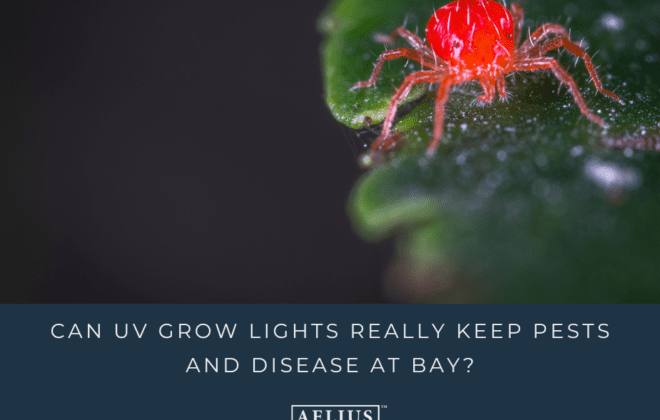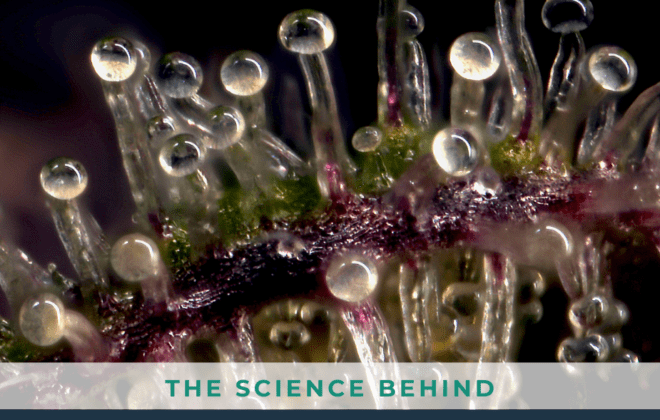Choosing The Right LED For Your Facility: Why All LEDs Are Not Alike

WHAT TO LOOK FOR WHEN SELECTING LEDS:
When it comes to LEDs, the conversion can seem a little overwhelming. The market is inundated with options, which can make choosing the right one challenging. The reality is not all LEDs are alike. To successfully navigate through the choices, you need to be able to pinpoint the key differences and determine which product is best for your growing operation.
To help you through this process, we’ve highlighted the key elements that you need to watch out for to make sure that you choose the LED that will get the job done right.
UNDERSTANDING THE BASICS:
For those that do not know, Light Emitting Diodes (LED) are a semiconductor that when connected to an electrical source, emits light. Each LED light is made up of two semiconducting materials, a p-type, positively charged, and an n-type, which is negatively charged. The negatively charged material has extra electrons which it then gives to the p-type atoms when an electric current runs through the diode. When these extra electrons jump the gap between the two semiconductors, energy is released in the form of photons.
This is the basic structure of all LED lights and is the foundation that has helped develop the most energy-efficient and technically savvy lights in the industry. The technology was invented in 1962 and was first applied to growing operations by Nasa in the 1990s. LED technology has evolved dramatically since then making it easier for growers to discover the right light for their operation. However, this also has created a market that is flooded with products with varying degrees of performance and quality. So, what should a grower be looking out for when choosing the LED to install in their indoor operation?
PERFORMANCE: HOW LONG DOES THE LED LAST?
One of the main reasons Controlled Environment Agriculture growers choose LED lights is because of their long life span, especially when compared to CFL and incandescent lights. However, LEDs do not last forever, which is why it’s essential to know the life of the products that you are considering investing in.
Over time, LEDs will experience lumen depreciation, and the lights will begin to dim. The lifetime of LED lights is considered over when the output decreases by 30%. This is referenced as L70, and although it is not usually listed on specification sheets, it refers to when the LED light is only producing 70% of its original output. According to the National LED, a good quality light should last at least 25,000 hours before reaching this L70 end-of-life output. Aelius LED’s more than double that number, with the L90 output (when the light is producing 90% of its original output) at 50,000 hours – meaning they have many more hours to shine above your crops before reaching the L70 benchmark.
Pro Tip: Check the specification sheet as it will often reveal the lumen depreciation of the light that you are reviewing.
For Example Aelius specification sheet states:
L90>50,000
This spec means that after 50,000 hours or greater, your Aelius LED could be operating at only 90% of its original capacity.
Always ask, sometimes that can mean the difference between a quality LED and a below-average LED.
COOLING: KNOW WHICH COMPONENTS ARE USED
When looking at the overall performance and efficiency of LEDs, one of the key factors to pay attention to is thermal management. Basically, this is how the lights manage temperature; the cooler that the light performs at, the longer it will last.
LEDs are noticeably cooler than HPS, CFL, and HID lights. This is not only because they convert electricity to light more efficiently, but also because most LEDs use heat sinks (passive cooling) or integrated fans (active cooling) to absorb the heat made by the LED chips and then spread it into the surrounding environment. Passive cooling methods are created to both absorb and dissipate the heat produced from the light and are a far better choice overactive cooling LEDs in a commercial environment due to their simplicity and lack of moving parts that are prone to failures.
One of the challenges with certain LED products is that the heat sink is either too small or altogether missing. This will directly impact the performance of the light, which is why it is a very important element to evaluate when choosing the best fit for you. Premium LEDs use metal heat sinks with fins to pull away and dissipate the heat; lower grade lighting tends to use plastic sinks and internal, unreliable fans.
In fact, build quality is one of the biggest differentiators for LEDs in the market. Ask about the materials that the manufacturer is using to construct the lights and housing, including the construction material of the fixture (ie. plastic vs. metal) and its lifetime degradation, the lenses, the cooling mechanism, and drivers.
Aelius LED strives to always produce products with an over-engineered capacity for heat dissipation which allows for a longer chip life and higher efficiencies. Aelius also designs their fixtures to be no warmer than a cup of coffee to the touch. Increasing heat dissipation is also an important factor when considering environmental control, as it reduces “hot spots” and gives the Grower tighter control of their environment.
Pro Tip: Check out our blog refrencing VPD to make sure you adjust your environment appropriately to your new heat output.
INTEGRITY: DOES THE LED COMPANY STAND BEHIND ITS PRODUCT?
One of the key items to look for is whether the company stands behind its product. This includes taking a detailed look at the warranty including, the length of time and what it covers. Return policies and trial offerings are an excellent indicator of whether the company puts its money where its mouth is.
Third-party verification, including certifications, are also a good indicator that the product that you are looking to invest in has been tested and verified. For example, all Aelius products have been CE, CETLUS, DLC certified, and have an International Protection Marking of IP65.
Pro Tip: Companies that are DLC certified automatically have a 5-year warranty – looking for that DLC badge is a great way to narrow your selection to only the best.
LOOK BEYOND THE RESULTS
When determining the quality of the lights in your environment, it’s important to look beyond the basics. The fact is, when plants are placed under lights, they will grow. However, the health of the plant and the overall yield consistency will vary depending on the lights that you use. Investing in quality LEDs will have a direct impact on your production, including decreasing the overall energy consumption of the environment. Over the long term, you will notice a longer lifetime of the lights, increased consistency, yields, and quality of the plant.




